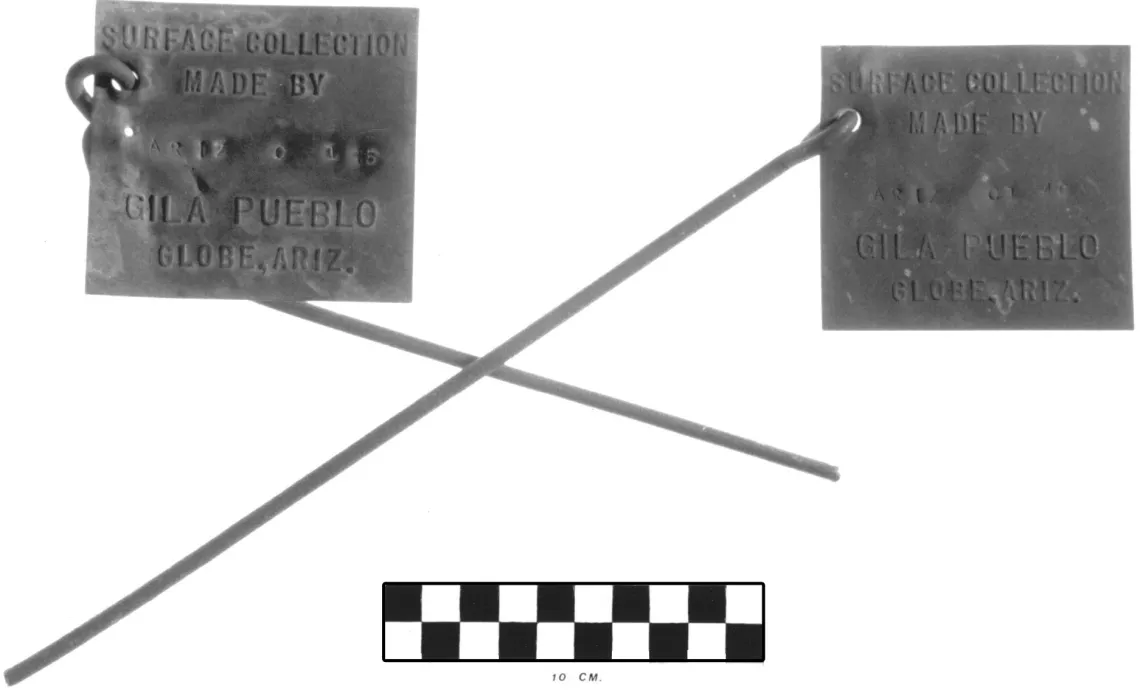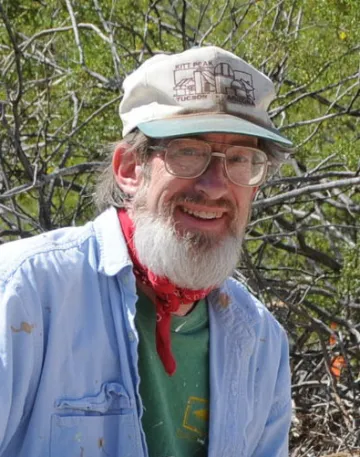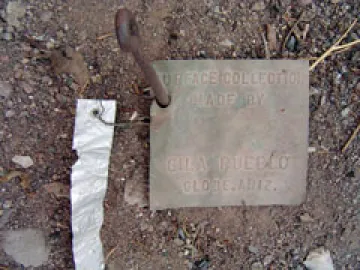
Gila Pueblo Site Tags
1929–1930
Recovered from Sierra Ancha Cliff Dwellings
AZ C:1:25(GP) (AZ V:1:164[ASM]) and AZ C:1:46(GP) (AZ V:1:174[ASM])
Brass and copper
Tag dimensions - Height 3.0 in. (7.5 cm.), Width: 3.2 in. (8.1 cm.)
Collected by Richard C. Lange, 1980s
(ASM Catalog Nos. 2004-1733-1 & 2004-1733-2)
The tags featured here were put into cliff dwellings in the Sierra Ancha of central Arizona during a project conducted by Emil Haury from 1929 to 1930. At that time, Haury was a new graduate of the University of Arizona, then serving as the Assistant Director of Gila Pueblo. He went on to become Head of the Department of Anthropology at the University of Arizona and Director of the Arizona State Museum. Haury is regarded as one of the fathers of Southwestern archaeology.
I collected these tags in the 1980s, because they were the only ones found in any of the sites relocated in the Sierra Ancha, and because of their historical significance. It is unclear how many sites may have been marked with this kind of tag, in this area or among the more than 8,000 sites recorded by Gila Pueblo. Perhaps such site tags were not commonly used, or else the vast majority have been removed by rodents such as packrats, have decayed and disappeared, or have been taken by souvenir hunters.
Haury, Emil W
- 1934 Canyon Creek Ruin and Cliff Dwellings of the Sierra Ancha. Medallion Papers No. 14. Gila Pueblo, Globe, Arizona.
Haury, Emil W.
- 1988 Gila Pueblo Archaeological Foundation: A History and Some Personal Notes. The Kiva 54(1):1-96.
Lange, Richard C.
- 2006 Echoes in the Canyons: The Archaeology of the Southeastern Sierra Ancha, Central Arizona. Arizona State Museum Archaeological Series 198, University of Arizona, Tucson, Arizona.







